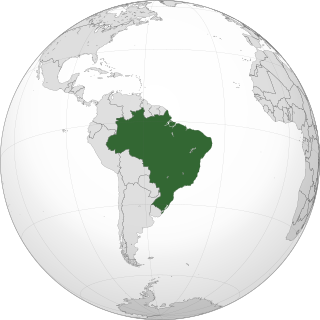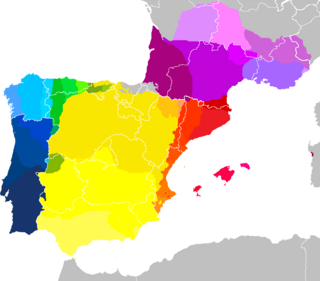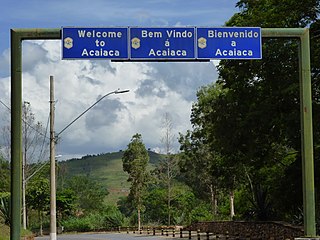
Portuguese is a Western Romance language of the Indo-European language family, originating in the Iberian Peninsula of Europe. It is an official language of Portugal, Brazil, Cape Verde, Angola, Mozambique, Guinea-Bissau and São Tomé and Príncipe, while having co-official language status in East Timor, Equatorial Guinea, and Macau. A Portuguese-speaking person or nation is referred to as "Lusophone". As the result of expansion during colonial times, a cultural presence of Portuguese speakers is also found around the world. Portuguese is part of the Ibero-Romance group that evolved from several dialects of Vulgar Latin in the medieval Kingdom of Galicia and the County of Portugal, and has kept some Celtic phonology in its lexicon.

Portuguese creoles are creole languages which have Portuguese as their substantial lexifier. The most widely-spoken creoles influenced by Portuguese are Cape Verdean Creole, Guinea-Bissau Creole and Papiamento.
Portuguese dialects are the mutually intelligible variations of the Portuguese language in Portuguese-speaking countries and other areas holding some degree of cultural bond with the language. Portuguese has two standard forms of writing and numerous regional spoken variations, with often large phonological and lexical differences.

Brazilian Portuguese, also Portuguese of Brazil or South American Portuguese is the set of varieties of the Portuguese language native to Brazil and the most influential form of Portuguese worldwide. It is spoken by almost all of the 203 million inhabitants of Brazil and spoken widely across the Brazilian diaspora, today consisting of about two million Brazilians who have emigrated to other countries. With a population of over 203 million, Brazil is by far the world's largest Portuguese-speaking nation and the only one in the Americas.
Angolan Portuguese is a group of dialects and accents of the Portuguese language used mostly in Angola, where it is an official language. In 2005 it was used there by 60% of the population, including by 20% as their first language. The 2016 CIA World Fact Book reports that 12.3 million, or 47% of the population, speaks Portuguese as their first language. However, many parents raise their children to speak only Portuguese. The 2014 census found that 71% speak Portuguese at home, many of them alongside a Bantu language, breaking down to 85% in urban areas and 49% in rural areas.

European Portuguese, also known as Portuguese of Portugal, Iberian Portuguese, and Peninsular Portuguese, refers to the dialects of the Portuguese language spoken in Portugal, Angola, Mozambique, São Tomé and Príncipe and Guinea-Bissau. The word "European" was chosen to avoid the clash of "Portuguese Portuguese" as opposed to Brazilian Portuguese.

Portuguese is spoken in a number of African countries and is the official language in six African countries: Angola, Mozambique, Guinea-Bissau, Cape Verde, São Tomé and Príncipe and Equatorial Guinea. There are Portuguese-speaking communities in most countries of Southern Africa, a mixture of Portuguese settlers and Angolans and Mozambicans who left their countries during the civil wars. A rough estimate has it that there are about 14 million people who use Portuguese as their sole mother tongue across Africa, but depending on the criteria applied, the number might be considerably higher, since many Africans speak Portuguese as a second language, in countries like Angola and Mozambique, where Portuguese is an official language, but also in countries like South Africa and Senegal, thanks to migrants coming from Portuguese-speaking countries. Some statistics claim that there are over 41.5 million Portuguese speakers in the continent. Africa is, therefore, the continent with the second-most Portuguese speakers in the world, only behind the Americas. Like French and English, Portuguese has become a post-colonial language in Africa and one of the working languages of the African Union (AU) and the Southern African Development Community (SADC). Portuguese co-exists in Guinea-Bissau, Cape Verde, and São Tomé and Principe with Portuguese-based creoles, but Portuguese continues to be the official language of these countries. Additionally, Portuguese has become the national language of Angola, as it is so widely spoken in every segment of society, and serves as the home language of the majority of the Angolan population, particularly in the big towns and cities. A few native African languages continue to be spoken, but are losing ground to Portuguese. In Mozambique, in addition to Portuguese as the official language, it is fast becoming the lingua franca. And as in Angola, Portuguese is the dominant spoken language in the urban areas of the country. In the five former African Portuguese colonies, Portuguese is the language of: commerce, the government, courts, schools and mass media.
In linguistics, a sprachraum is a geographical region where a common first language, with dialect varieties, or group of languages is spoken.

São Toméan Portuguese is a dialect of Portuguese spoken in São Tomé and Príncipe.

Uruguayan Portuguese, also known as fronteiriço and riverense, and referred to by its speakers as portunhol, is a variety of Portuguese in South America with heavy influence from Rioplatense Spanish. It is spoken in north-eastern Uruguay, near the Brazilian border, mainly in the region of the twin cities of Rivera (Uruguay) and Santana do Livramento (Brazil). This section of the frontier is called "Peace Border", because there is no legal obstacle to crossing the border between the two countries.

Portuguese is the official and national language of Brazil being widely spoken by most of the population. Brazil is the most populous Portuguese-speaking country in the world, with its lands comprising the majority of Portugal’s former colonial holdings in the Americas.

Mozambican Portuguese refers to the varieties of Portuguese spoken in Mozambique. Portuguese is the official language of the country.

Guinean Portuguese is the variety of Portuguese spoken in Guinea-Bissau, where it is the official language.

Macanese Portuguese is a Portuguese dialect spoken in Macau, where Portuguese is co-official with Cantonese. Macanese Portuguese is spoken, to some degree either natively or as a second language, by roughly 2.3% of the population of Macau. It should not be confused with Macanese language, a distinct Portuguese creole that developed in Macau during the Portuguese rule.

The languages of South America can be divided into three broad groups:

The Southern Common Market, commonly known by Spanish abbreviation Mercosur, and Portuguese Mercosul, is a South American trade bloc established by the Treaty of Asunción in 1991 and Protocol of Ouro Preto in 1994. Its full members are Argentina, Brazil, Paraguay, and Uruguay. Venezuela is a full member but has been suspended since 1 December 2016. Associate countries are Bolivia, Chile, Colombia, Ecuador, Guyana, Peru, and Suriname.
The Portuguese language is spoken in Asia by small communities either in regions which formerly served as colonies to Portugal, notably Macau and East Timor where the language is official albeit not widely spoken, Lusophone immigrants, notably the Brazilians in Japan or by some Afro-Asians and Luso-Asians. In Larantuka, Indonesia and Daman and Diu, India, Portuguese has a religious connotation, according to Damanese Portuguese-Indian Association, there are 10 – 12,000 Portuguese speakers in the territory.
Citizenship of the Mercosur is granted to eligible citizens of the Southern Common Market member states. It was approved in 2010 through the Citizenship Statute and should be fully implemented by the member countries in 2021, when the program will be transformed in an international treaty incorporated into the national legal system of the countries, under the concept of "Mercosur Citizen".

This article provides details regarding the geographical distribution of all Portuguese-speakers, a.k.a.Lusophones, regardless of legislative status. The Portuguese language is one of the most widely spoken languages in the world and is an official language of countries on four continents.
Portuguese in Austria are citizens and residents of Austria who are of Portuguese descent.













